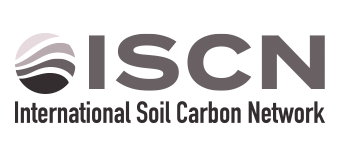The ISCN Database is an evolving data resource. Because it is too large to present in one file, it is available as a set of documents, reports, and tables; because it changes over time, it is important to note the version date stamped in the upper-left corner of any dataset that you access.
Summary and descriptive information about the data in database is available on the Data Documentation page, which is linked at left under Dataset Information. The Dataset Information section also includes information about ISCN’s data policy, database computations, variables, QA/QC, and other materials that go into greater detail than this quick-start guide. Access to the contents of the database requires an account.
Data are input to and reported from the database using standardized variable names. Each of these variables fits within a hierarchy of spatial scales, with some being classified as site-level (e.g., climate and geologic formation), others relevant to individually collected soil profiles (e.g., soil series and taxonomic order), and still others that are used to describe the individually collected soil layers that comprise each soil profile (e.g., horizon thickness or sampling depth, %carbon, bulk density). By using the unique Site, Profile, and Layer IDs that run throughout the data reports, you can sort and filter datasets and perform your own manipulations using the data products that we have provided as a starting point.
Now in its 3rd generation (12/2015), the ISCN database includes data for over 430,000 individual soil layers from over 71,000 profiles worldwide. The data are presented by several mechanisms- the route you choose will depend upon your intended use and the data you need for your project:
- The 3rd generation data products are presently available for download only, in Excel format. Data are separated into profile- and layer-level data products. These profile- and layer-level database reports are available in two forms: 1) for all profiles/all layers; 2) for only those profiles and layers that have computed SOC stocks. Note that the all-data layer-level database reports are further separated into several subsets (based on location) in order to ensure that they are of downloadable size.
- Data access through the map-based data access feature allows the user to specify a geographic extent and select variables to include in a customized data download. The data contained in the map are from the Generation 3 Database version.
- 2nd generation data products (12/2012) are available for download only. These datasets are available for continuity but are much smaller in size and are superseded by the 3rd generation.
If you need help with data browsing or would like to report an error or problem with the data, please contact nscn-support@george.lbl.gov.
